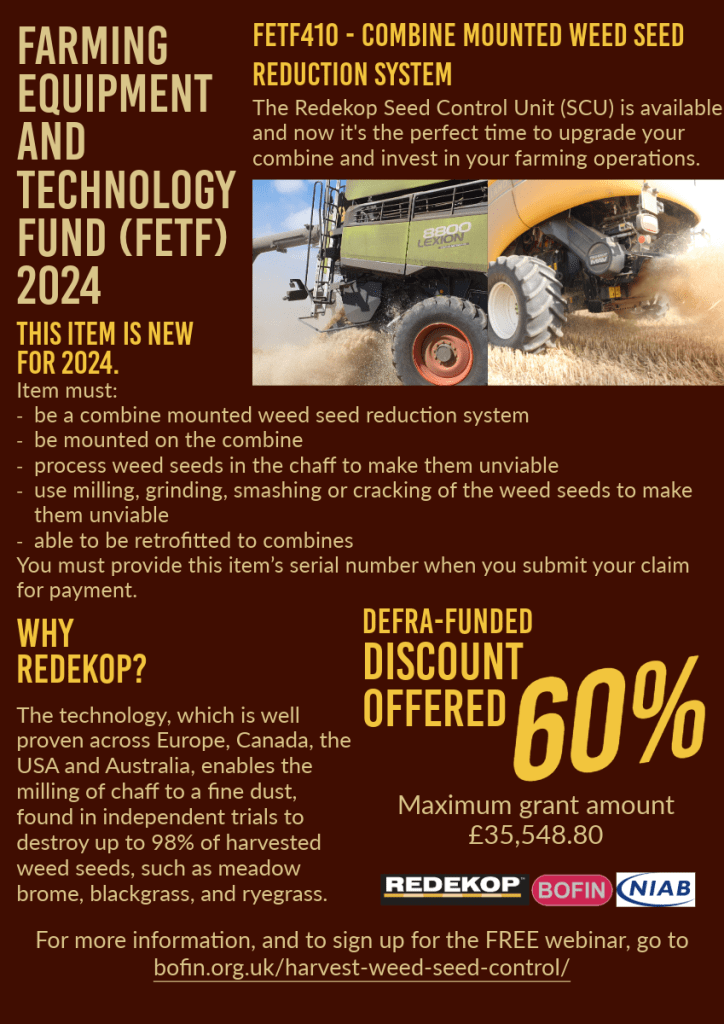What’s next?
Now that the Harvest Weed Seed Control project has come to a close, see what’s next for The Seed Circle below.
What’s next for the Seed Circle?
The GRASP project is currently on hold until the end of 2024, however the aim of the project is to. build on R&D from NIAB, Rotthamsted Research and BGRI. The project will be farmer led with support from commercial partners to take control of monitoring techniques and strategies relating to control of grass weed.
The aim of the project will be to test and develop non-chemical forms of weed control, including: Mechanical (hoeing, HWSC, weed-surfing, etc), Autonomous or real-time green-on-green detection, Laser/light/electric weed control, RNA disruption and/or biological/genetic control, Spot/precision-application.
Join the Seed Circle to receive updates about this project:

Farming Equipment and Technology Fund 2024

BOFIN, hosted a webinar to provide guidance on how farmers can secure funding for cutting edge equipment such as the Redekop Seed Control Unit (SCU).
“Over the past two years, the Harvest Weed Seed Control (HWSC) project has been working with scientists at NIAB, UK farmers and Seed Scouts to compile grassweed data for analysis in the UK’s first ever farmer-led survey of grassweeds left standing at harvest,” says Tom Allen-Stevens, BOFIN Founder.
Analysis has now taken place and some interesting trends have been identified.
“From the results obtained by our Seed Scouts and four UK farmers completing on-farm trials with the Redekop SCU, we have been able to identify the potential value of the SCU in helping farmers tackle grassweeds,” Mr Allen-Stevens adds.
“We are therefore very excited that the Redekop SCU has been included as part of the Farming Equipment and Technology Fund 2024.”
Securing a grant for the Redekop SCU through the FETF would provide farmers with as much as 60% of the total cost, saving them around £35,000. Carter Jonas Partner James Bradley, who has prepared and submitted many applications on behalf of farmers and landowners, talks attendees through the FETF and was on hand to answer any questions attendees had about the funding application. Joining him was Trevor Thiessen, co-owner and president at Redekop Manufacturing, who provided further insight into the SCU. Keith Challen, farm manager at Belvoir Farming Company, discussed his direct involvement within the HWSC project and experience using the Redekop SCU. John Cussans, weed biology and management specialist at NIAB, presented the final results from the HWSC project.
SCU Interest Survey:
FETF Q & A: